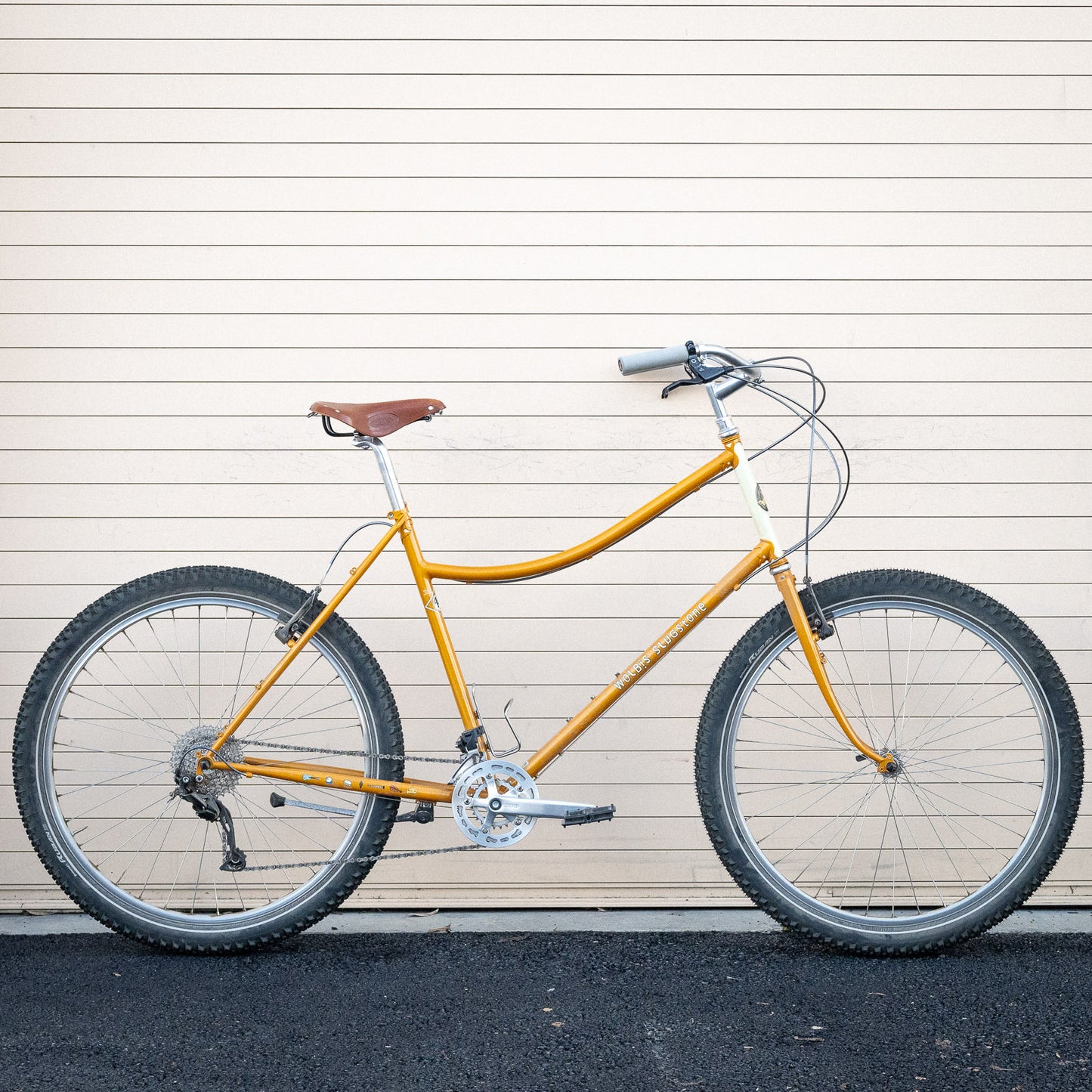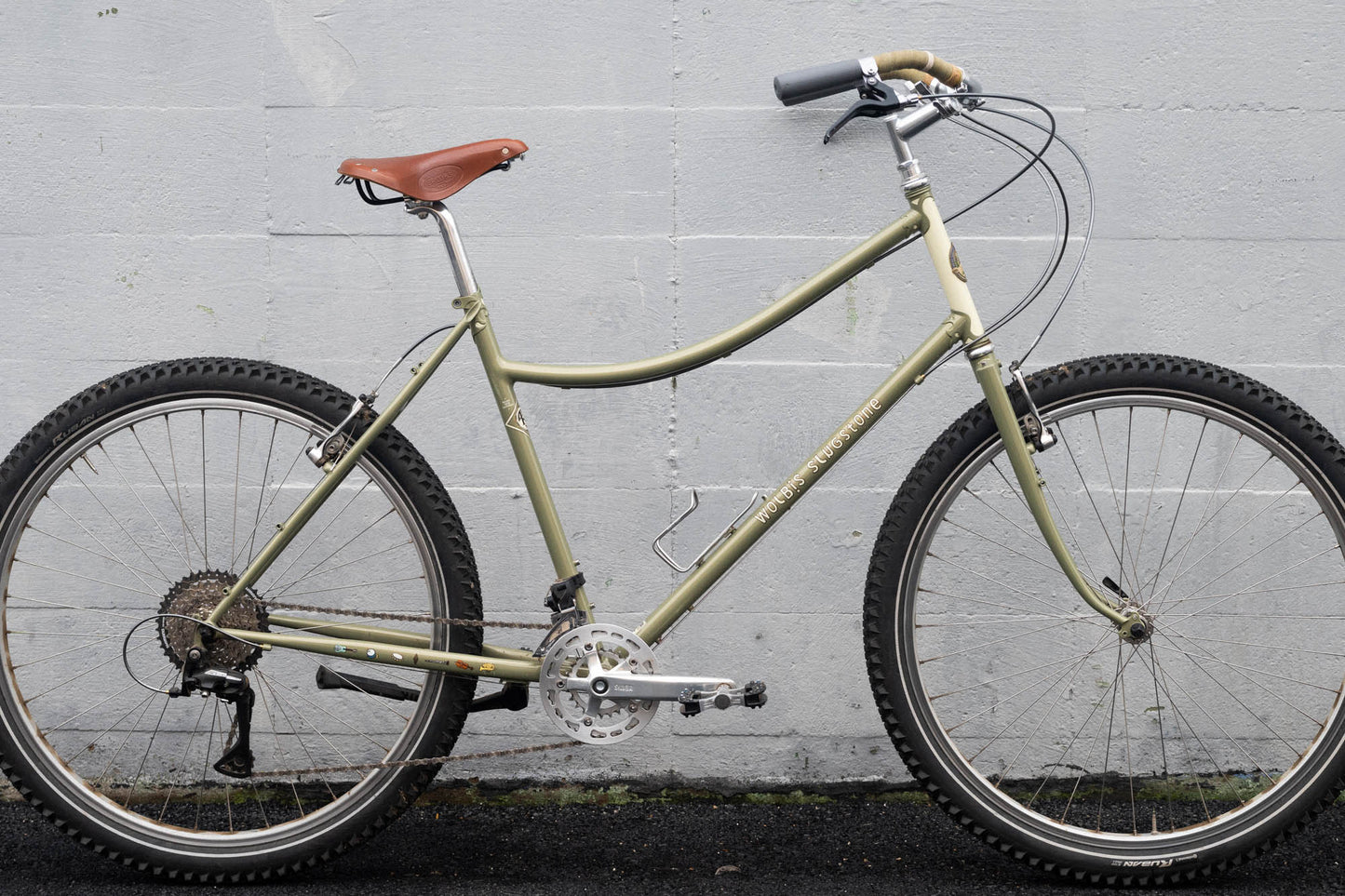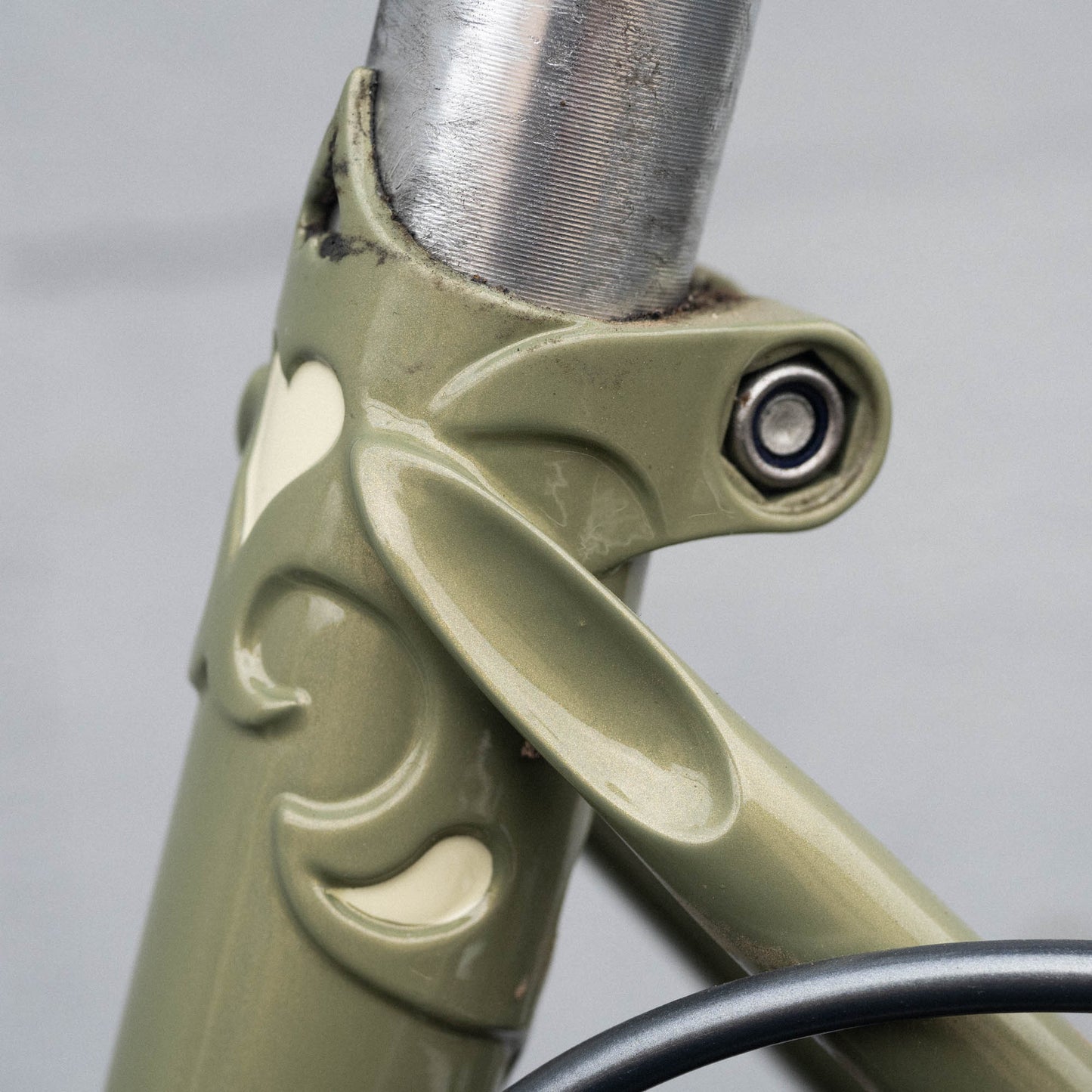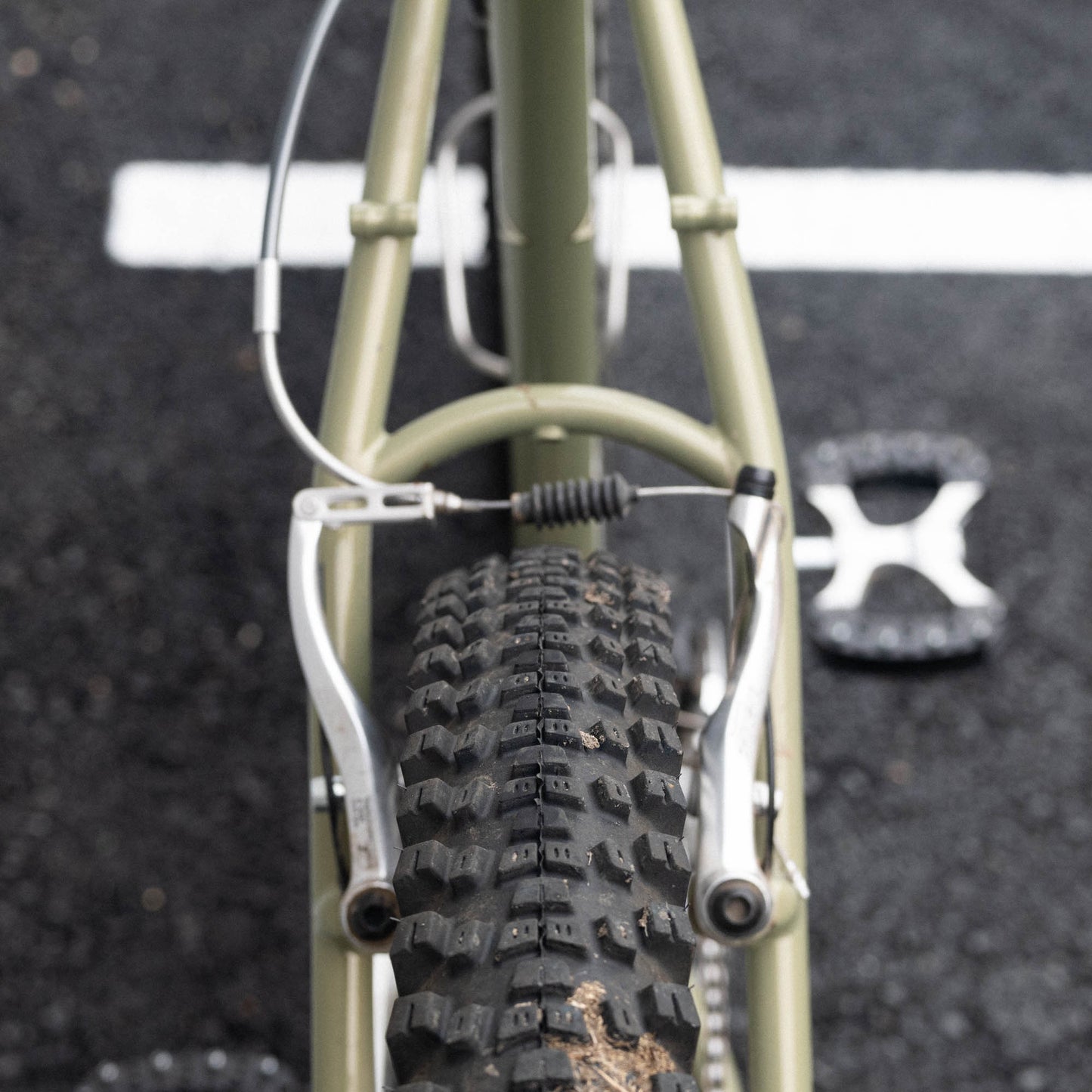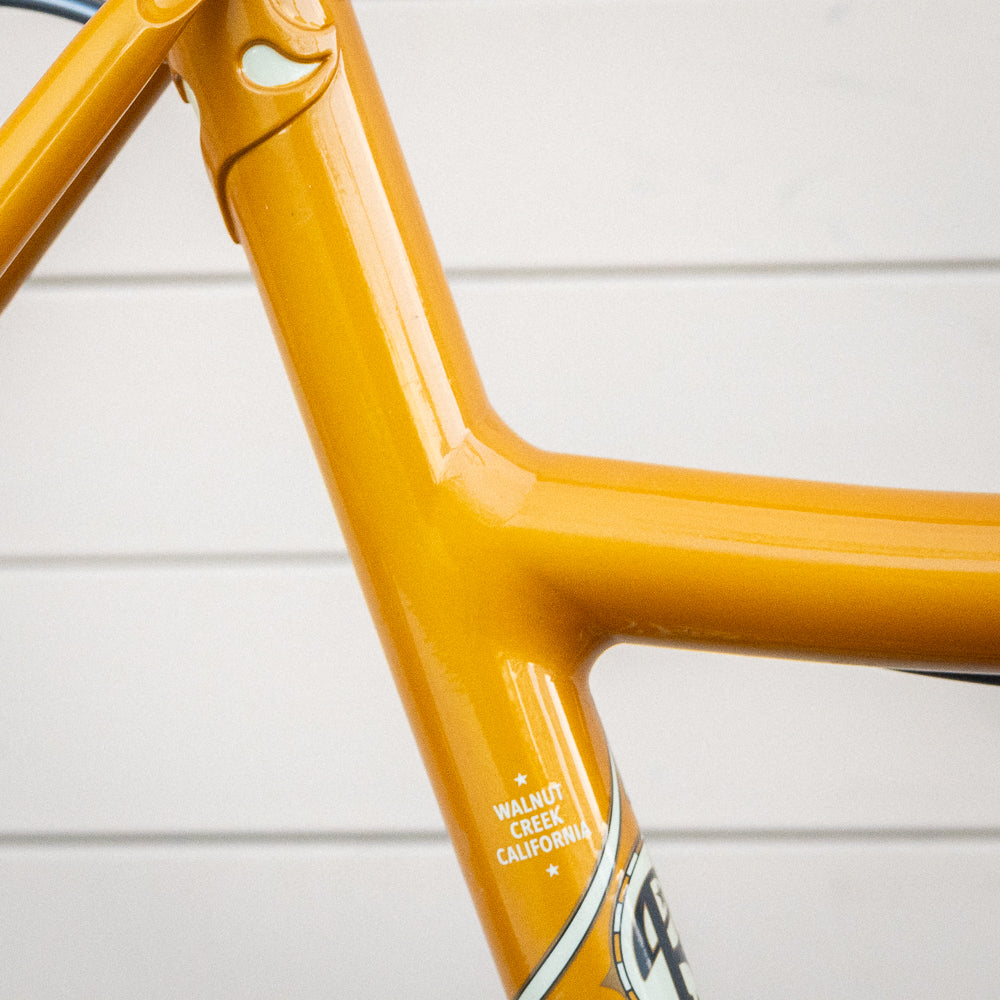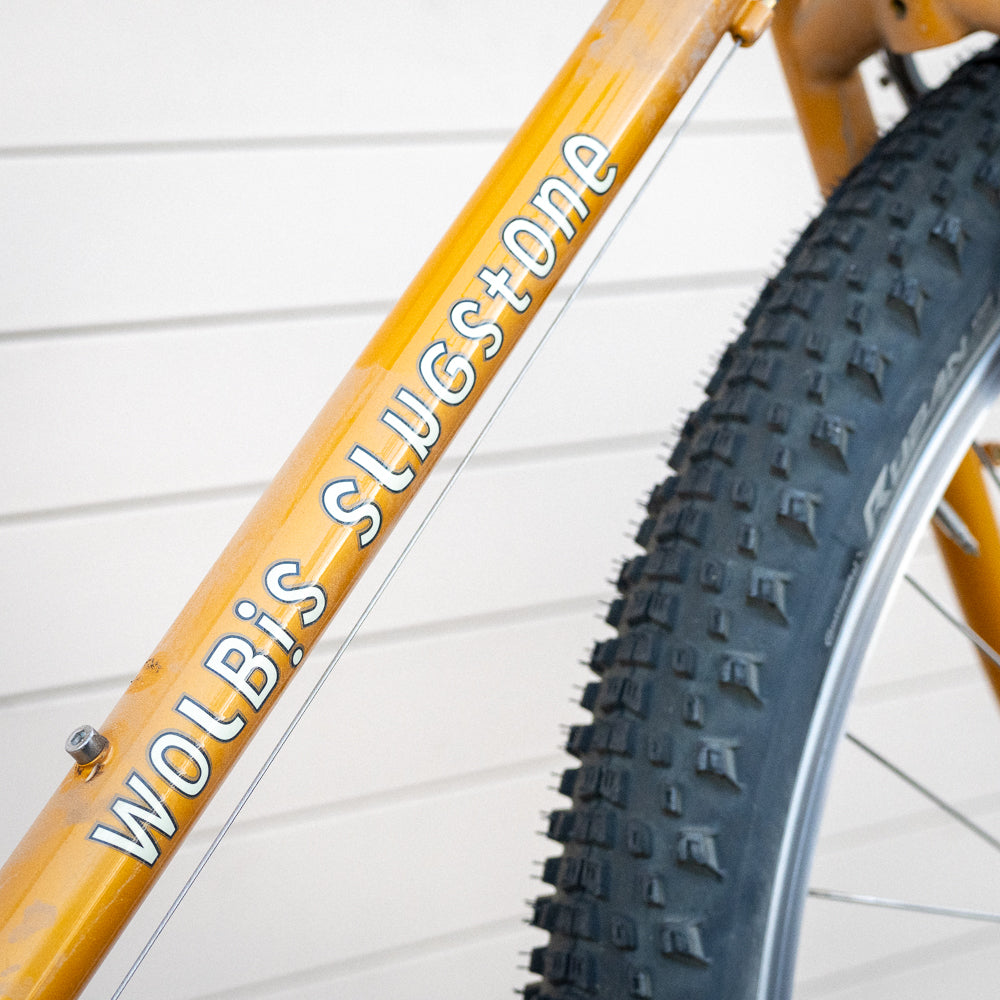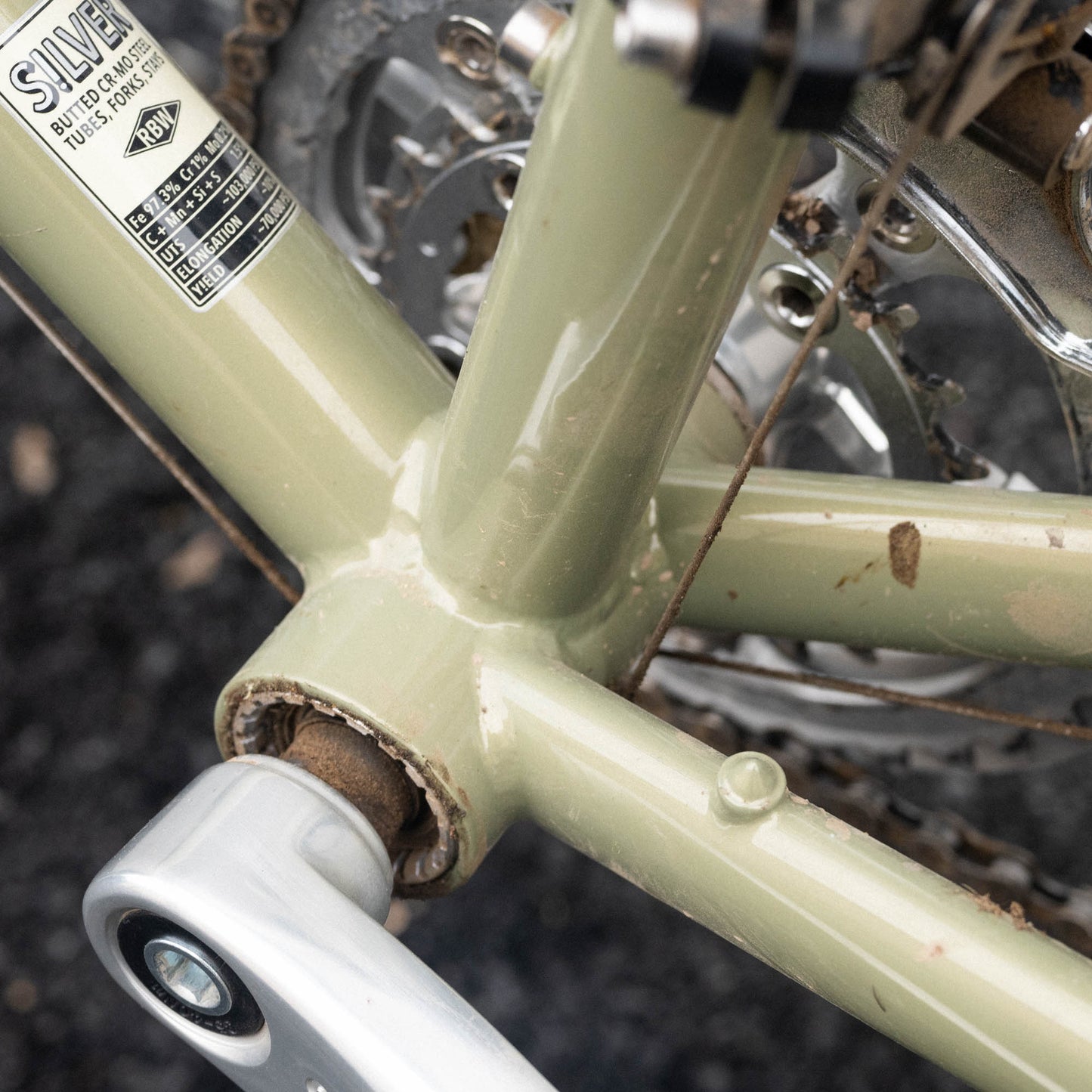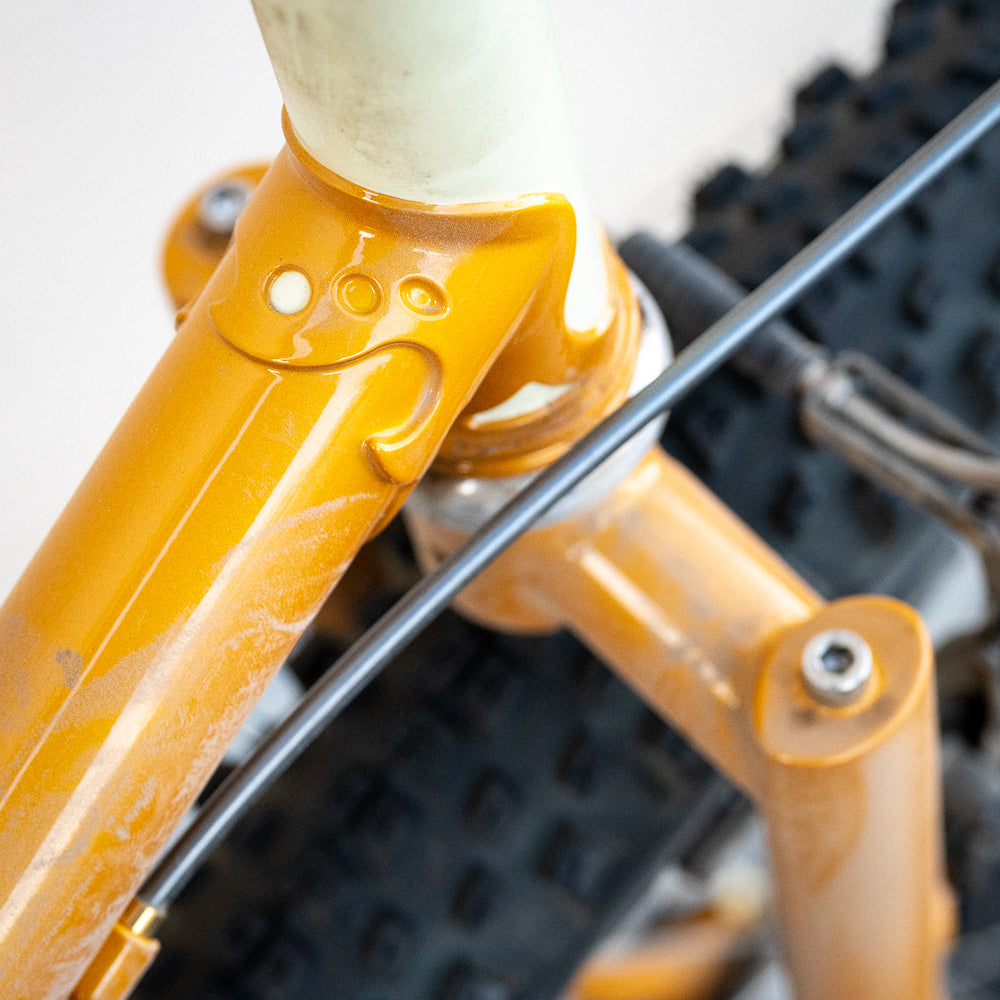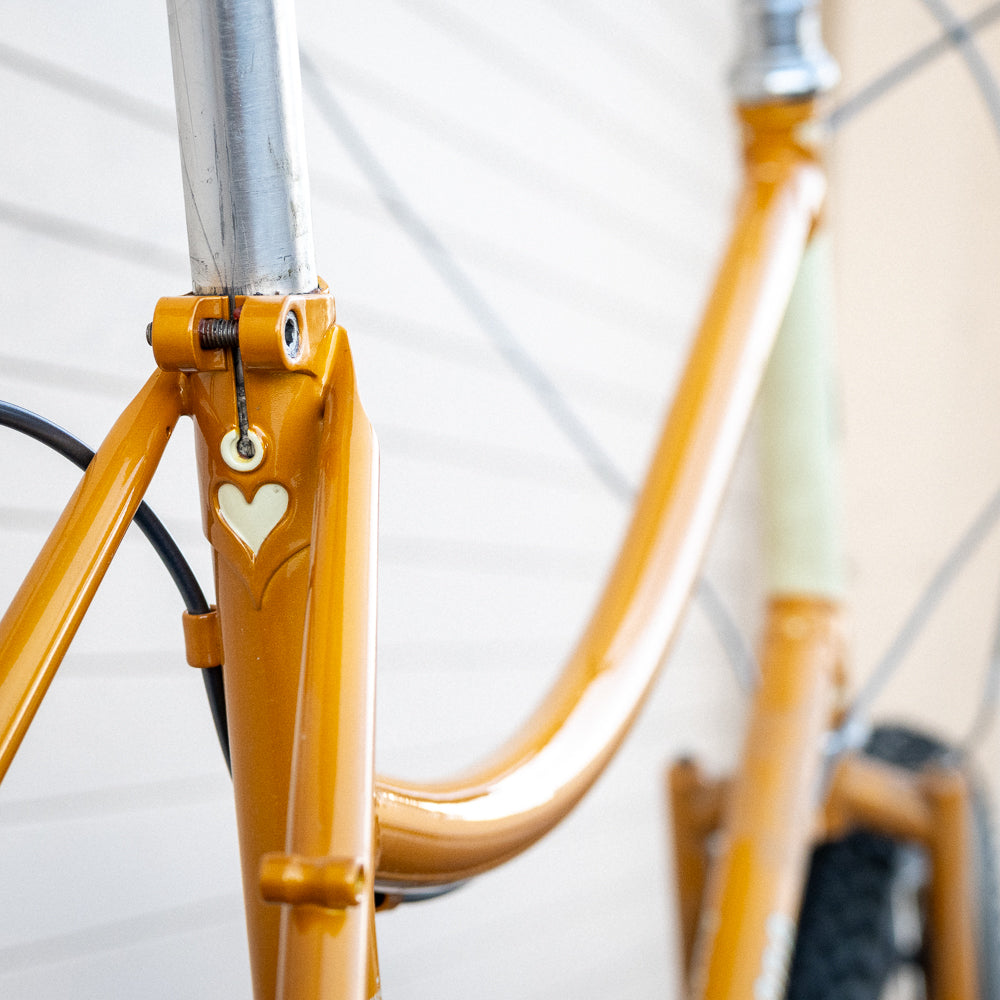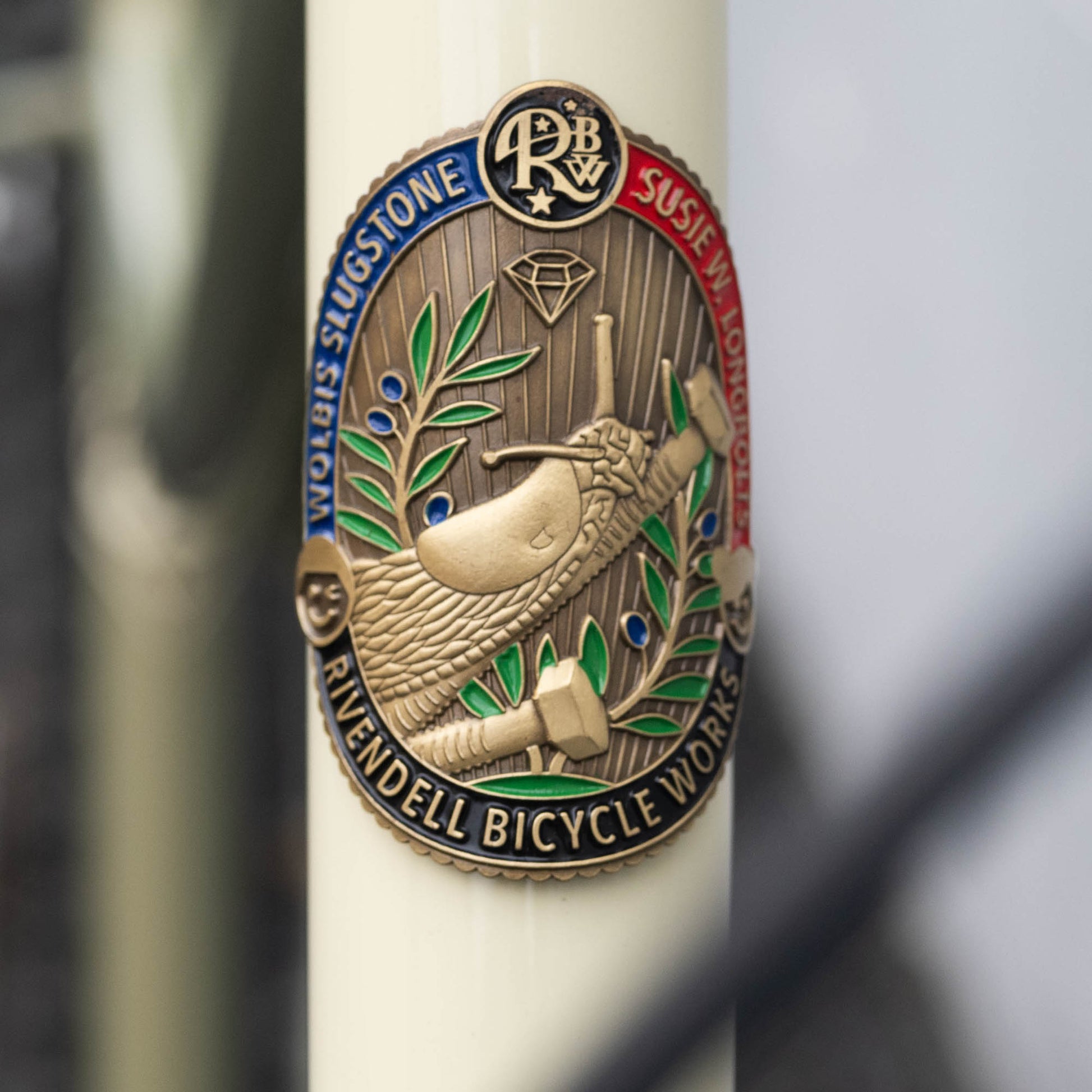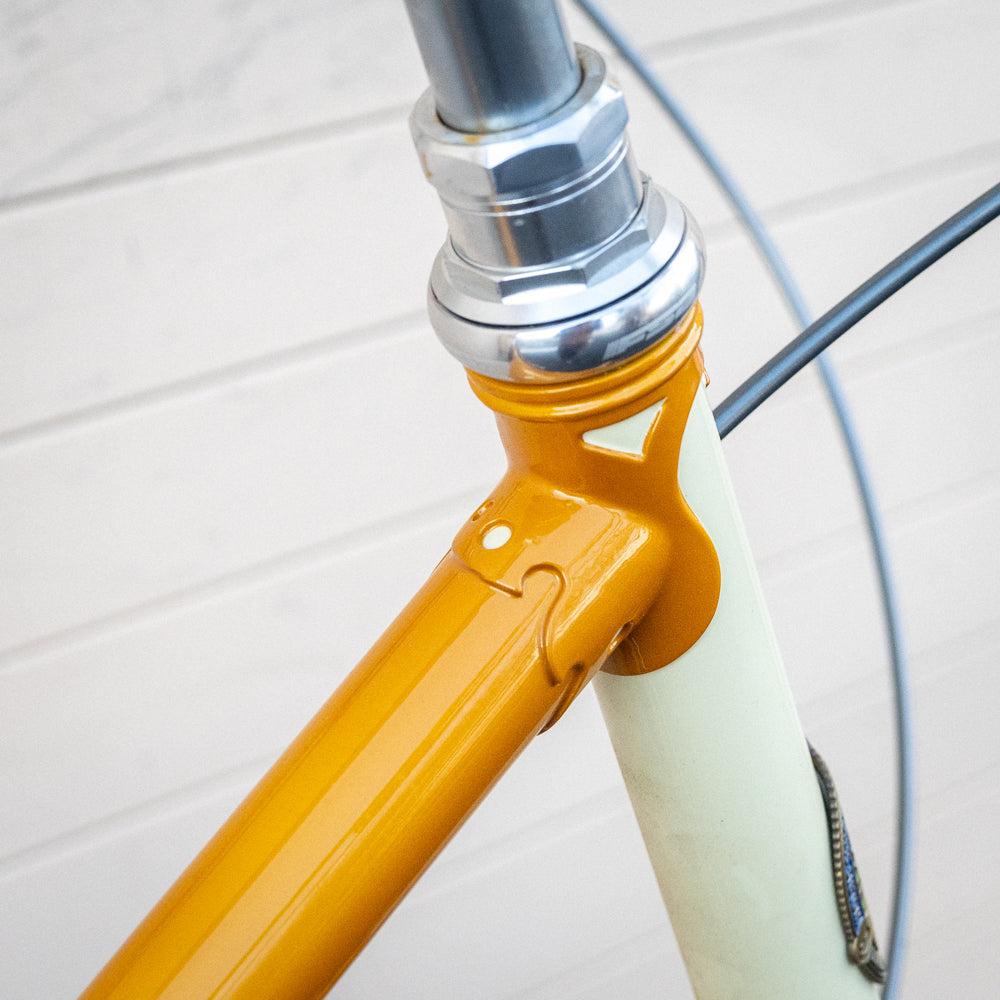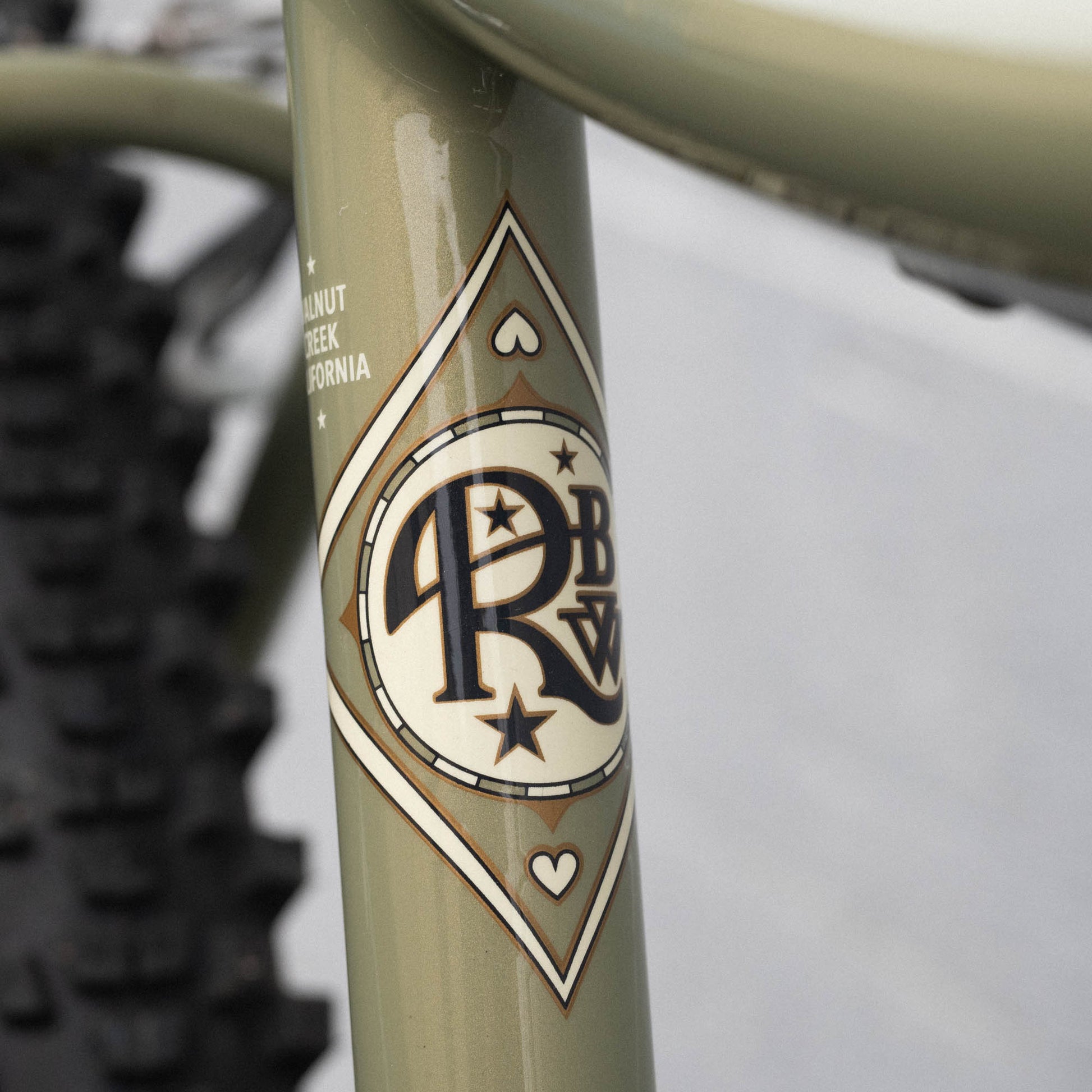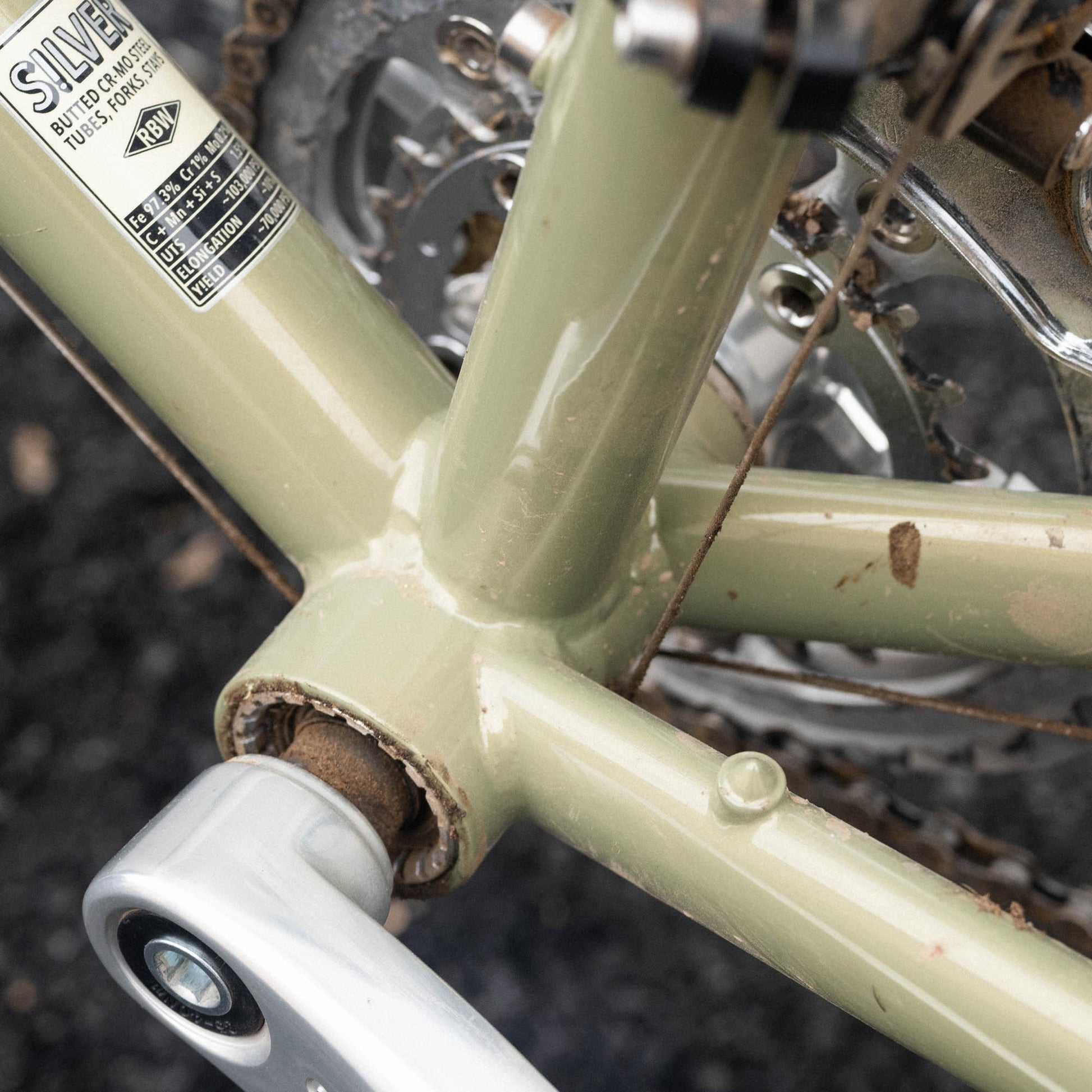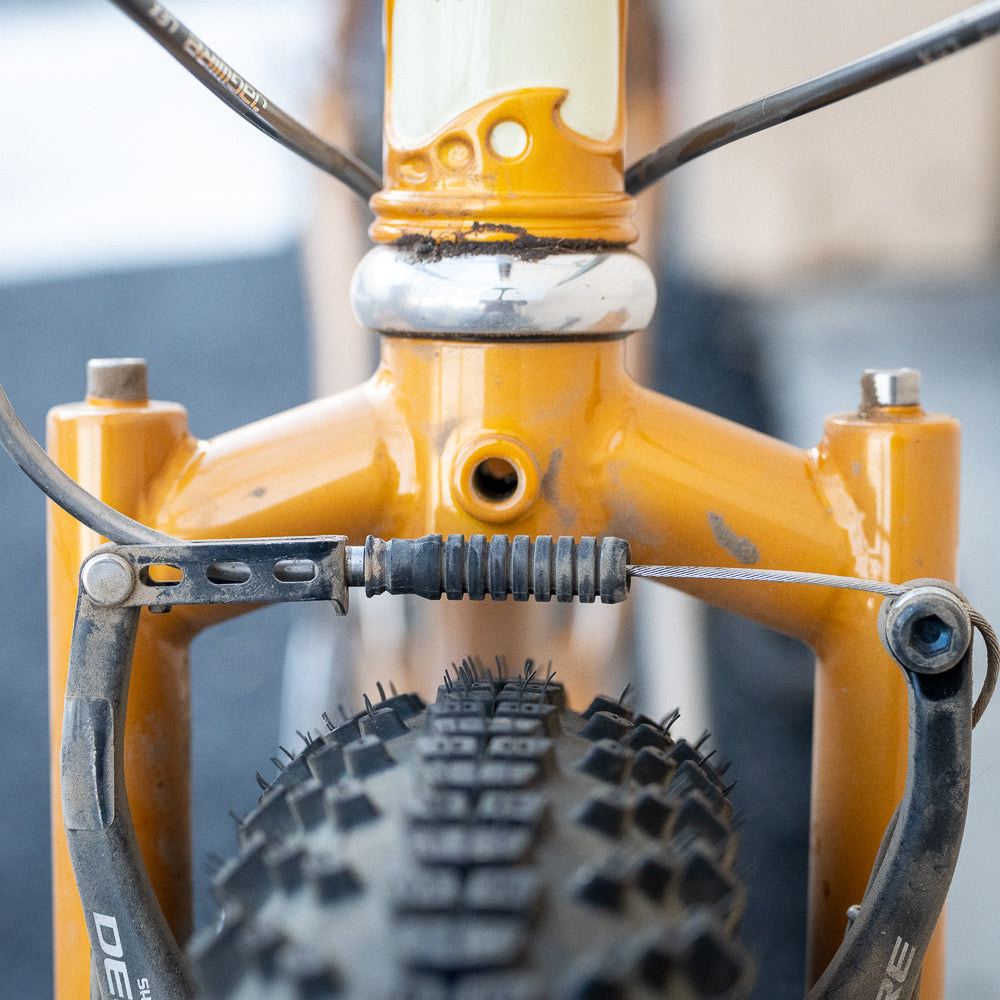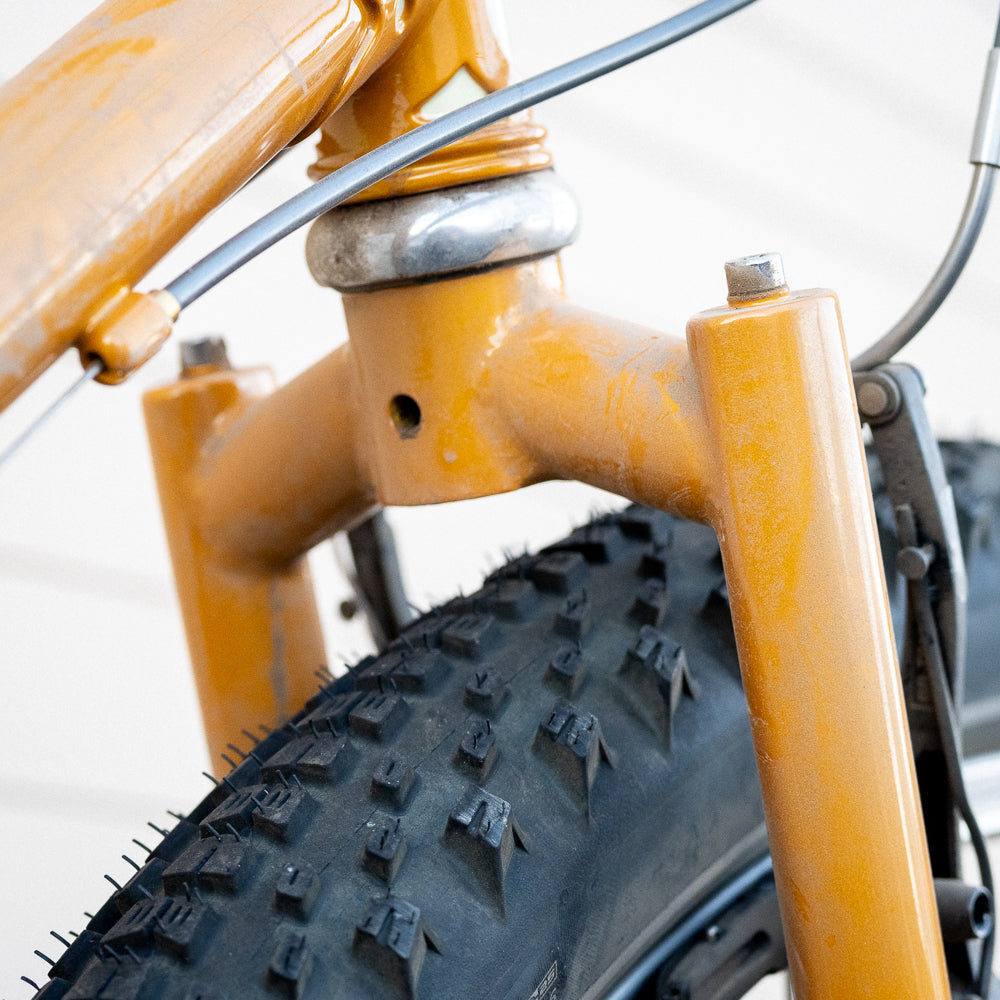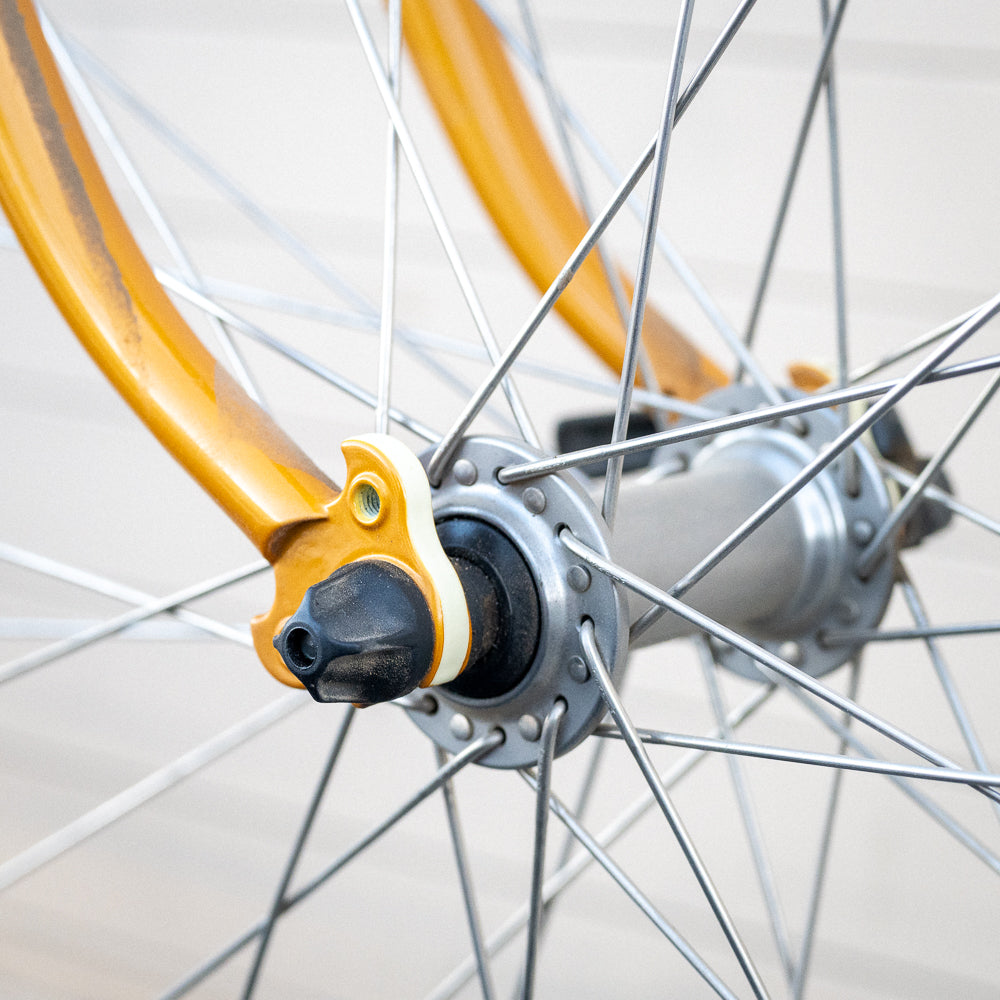Frame - Lugged Susie W. Longbolts / Wolbis Slugstone
Frame - Lugged Susie W. Longbolts / Wolbis Slugstone
Couldn't load pickup availability
Susie W. Longbolts / Wolbis Slugstone
Three things that make a bike work for trails
1. Long wheelbase. Length adds stability in surfboards, skateboards, cars, skis, boats, and bicycles. Our Hillibike chainstays are almost half a foot longer than your garden-variety modern mountain bike chainstays, and the bikes ride better for it.
2. High handlebars. A higher bar makes it easier to keep your weight safe and rearward riding position on steep descents, and is more comfortable on all terrain. When you hit a bump a higher bar makes it easier to control the bike. Lower bars are marginally better for climbing, but climbing is in your legs and technique, not bars. Just make sure your grips are up where they feel good.
3. Big tires. Big soft knobbies work great, and any skilled rider should be able to ride rough surfaces with 2-inch tires and some care and skill. The CLEM fits tires at least up to 2.4, and the Gus and Wolbis, to 2.6 inches. That’s plenty big.
If your goals are racing (in which case you aren't reading this) and "slaying the terrain" (ditto), Susie is not the bike for you. But it is stunningly capable on all sorts of improbable, rocky, loose, and steep terrain.
Susie's materials, quality, longevity
The frames and forks are made of chromium-molybdenum steel (CrMo)—the best-for-bicycles, most dimensionally appropriate, toughest, longest-lasting, most recyclable, and safest frame and fork material in the world. The lugs are our own design, and add strength, detail, and beauty to the joints.
Chrome-Molybdenum (CrMo) steel is the best frame and fork material, period.
CrMo responds to trauma by denting and bending, not shattering or snapping in half. If it gets hurt by minor impacts, gouges, and scratches, it tends to slough them off. Carbon degrades with exposure to sun and water; CrMo doesn’t.
Any damage or threat to steel is visible because it’s on the outside, not hidden inside among layers of carbon fabric. That’s why steel is used for hammers, nails, bridges, the skin of ships, and the guts of rocketship engines.
Rust and Longevity.
"Rust fear" is unjustified since rust avoidance is so easy. Paint takes care of the outside, and internal rust is not likely to kill your frame for at least 50 years, but we recommend a rust-inhibitor spray for the insides...something like Boeshield T9. We sell that, and Ace Hardware sells half a dozen other anti-rust sprays.
There are a dozen or more readily available sprays that stop or prevent rust on steel, and yet the streets of Europe and Asia are filled with 50-year old steel bikes that have never been treated or coddled, and still roll.
Spray your frame and don’t fret. Your Susie will be rideable decades after today’s carbon frames are landfill.
Quality.
Our Hillibikes are hand-made and built as well as any production frame in the world. Each Gus and Wolbis frame (not including fork) takes one builder five hours to make. They’re good frames.
Load Bearing.
It’s for riders under 250 pounds and 25lbs or less. If you weigh 160 pounds, you can probably carry loads of 40lbs. Our weight limits are a conservative hunch, not laboratory-derived. A lot of it depends on tire pressure and even more importantly, technique.
It's not for jumps or stunts, it's for for traveling over terrain that requires fatter tires.
Like our other bikes, it uses a quill stem and has a Riv-standard 1-inch threaded steerer.
Frame Geometry Notes
There’s a lot of misunderstanding about how a frame’s geometry (angles, dimensions) influences fit and ride. Conventional opinion says a short chainstay makes a bike quicker; a slack seat tube adds comfort; more “trail” or less will make your ride better or worse; a longer top tube stretches you out and is bad for women; and short femurs need steep seat tube angles. The only one of those we believe is the first--that short chainstays make a bike quicker. But "quicker" needs to be qualified. Quicker in this sense doesn't mean it'll help you go faster. It means the bike will be more reactive to external forces--wind, bumps, body English, and so on. That's not "helpful quicker," and it's not safe. When you're riding on bumps and unpredicatable surfaces, you want a bike that tolerates them. Suspension does that, but for non-racers, suspension is a technological substitute for a well-designed (longer!) frame, decent technique, and judgement.
Handlebar style: If your weight is too much on the front wheel, braking the rear wheel will make it skid, so you'll be forced to brake the front wheel more, which shifts your weight even farther forward, and increases the likelihood of an endo tenfold. Drop bars look macho and daring, but on an off-road bike they don't make sense, because when you brake, your hands are too far over the front wheel. A swept-back bar (Bosco, etc) allows you to scoot back on the saddle, shove the front wheel forward, and still access the brakes, and brake well behind the front wheel. This is the most anti-endo position possible.
A flat handlebar (Bull bar, Wavie bar) splits the difference. It's probably the most secure over super bumps, because the bar crosses your hand in way that makes slipping impossible. But flat bars don't let you shove the wheel as far ahead. A shorter stem helps. Basically, on the Susie and Clem, you'll like either style.
Relevant frame numbers:
- seat post: 26.8mm
- FD clamp: 28.6mm
- Standard 1" threaded headset (included)
- 73mm bottom bracket shell
PBH Ranges and Saddle Height (center of crank to top of saddle)
- 50cm (650B wheels): 74-76cm. Saddle height: 63cm to 65cm
- 53cm (650B wheels): 77-88cm. Saddle height: 66cm to 77cm
- 56cm (700C wheels): 79-90cm. Saddle height: 68cm to 79cm
- 59cm (700C wheels): 84-100cm. Saddle height: 73cm to 89cm
------
History (why these bikes)
October 21, 1976: The first of 22 informal but still serious races in which baby boomers in their 20s rode pre-WWII paperboy bikes beyond their limits down a 1,300 foot, 2.1-mile fire trail on Marin County’s Mount Tamalpais.
Frames bent, parts broke, brakes failed, and the single-speed gears were fine going down but not back up. Each vulnerable or unsuitable part was modified or replaced, until the state-of-the-art bike had a hodge podge of parts borrowed from BMX bikes, touring bikes, road bikes, and motorcycles. By the summer of 1977, the parts were fine, but the frames still weren’t.
So in the fall of 1977, one of the riders, a 23-year-old with the cool name of Joe Breeze, built a frameset using virgin, state-of-the-art materials, and assembled it with new and trail-worthy parts. That bike, now known as Breezer No. 1, was the world’s first fully baked, non-hodgey-podgey, genuine, bona fide, mountain bike. He’d build eighty more.
Joe rode Breezer No. 1 fast and hard on Mount Tamalpais and in the Rockies in Colorado. The Smithsonian borrowed it in March 2012, and it’s still there. If you could rent that Breezer No. 1 for a day, you’d feel pretty much what Joe felt, because bumps, rubble, ruts, and loose dirt haven’t changed since 1977.
It’s mountain bikes that have changed. Thru the ‘80s, they were simple: strong frames and forks with big tires, powerful brakes, and low gears. They were egalitarian, too. Other revolutionary bikes have been classist, sexist, snobby, exclusionary, or for the costumed clique, Euro-fawning road racers. The early mountain bikes were developed and refined by racers, but they worked as well for musicians, farmers, bookworms, and slackers. People who didn’t ride road bikes rode mountain bikes and had a blast, and the bikes held up.
Mountain bikes remained simple throughout the ‘80s, but formal mountain bike racing began in 1983, and drove physical changes in the bike and attitudes toward riding. By 1990, racing had gone international, and manufacturers adopted motocross technology to give their racers an edge on the roughest, fastest downhills, and the new technology (suspension) became standard. John Q. Public’s lust for technology was insatiable, and each uptick in bike tech left mountain biking’s flannel shirt, work boots-and-camaraderie roots further behind.
The uncomplicated trail bike is too boring for the mass market. It doesn’t work for the high-speed/high-risk stunts that define modern mountain biking, and that many riders aspire to.
--------
Shipping:
Frames:
Frame shipping is automatically set at $87 within the lower 48 states.
This rate may be adjusted depending on the actual rate at the time of shipping.
Bikes:
Bike orders will default to $250 to the lower 48. If your actual shipping price is more, we will reach out to you for an additional payment.
Share

